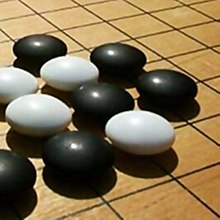The P versus NP problem is a major unsolved problem in theoretical computer science. Informally, it asks whether every problem whose solution can be quickly verified can also be quickly solved.
In theoretical computer science and mathematics, computational complexity theory focuses on classifying computational problems according to their resource usage, and explores the relationships between these classifications. A computational problem is a task solved by a computer. A computation problem is solvable by mechanical application of mathematical steps, such as an algorithm.

In computational complexity theory, NP is a complexity class used to classify decision problems. NP is the set of decision problems for which the problem instances, where the answer is "yes", have proofs verifiable in polynomial time by a deterministic Turing machine, or alternatively the set of problems that can be solved in polynomial time by a nondeterministic Turing machine.

In computational complexity theory, PSPACE is the set of all decision problems that can be solved by a Turing machine using a polynomial amount of space.
In computational complexity theory, a decision problem is PSPACE-complete if it can be solved using an amount of memory that is polynomial in the input length and if every other problem that can be solved in polynomial space can be transformed to it in polynomial time. The problems that are PSPACE-complete can be thought of as the hardest problems in PSPACE, the class of decision problems solvable in polynomial space, because a solution to any one such problem could easily be used to solve any other problem in PSPACE.
In computational complexity theory, the complexity class EXPTIME (sometimes called EXP or DEXPTIME) is the set of all decision problems that are solvable by a deterministic Turing machine in exponential time, i.e., in O(2p(n)) time, where p(n) is a polynomial function of n.
In computational complexity theory, EXPSPACE is the set of all decision problems solvable by a deterministic Turing machine in exponential space, i.e., in space, where is a polynomial function of . Some authors restrict to be a linear function, but most authors instead call the resulting class ESPACE. If we use a nondeterministic machine instead, we get the class NEXPSPACE, which is equal to EXPSPACE by Savitch's theorem.
A solved game is a game whose outcome can be correctly predicted from any position, assuming that both players play perfectly. This concept is usually applied to abstract strategy games, and especially to games with full information and no element of chance; solving such a game may use combinatorial game theory and/or computer assistance.
Combinatorial game theory measures game complexity in several ways:
- State-space complexity,
- Game tree size,
- Decision complexity,
- Game-tree complexity,
- Computational complexity.

In computational complexity theory, a complexity class is a set of computational problems "of related resource-based complexity". The two most commonly analyzed resources are time and memory.

Rush Hour is a sliding block puzzle invented by Nob Yoshigahara in the 1970s. It was first sold in the United States in 1996. It is now being manufactured by ThinkFun.
In computational complexity theory, P, also known as PTIME or DTIME(nO(1)), is a fundamental complexity class. It contains all decision problems that can be solved by a deterministic Turing machine using a polynomial amount of computation time, or polynomial time.
In computational complexity theory, the polynomial hierarchy is a hierarchy of complexity classes that generalize the classes NP and co-NP. Each class in the hierarchy is contained within PSPACE. The hierarchy can be defined using oracle machines or alternating Turing machines. It is a resource-bounded counterpart to the arithmetical hierarchy and analytical hierarchy from mathematical logic. The union of the classes in the hierarchy is denoted PH.

In computational complexity theory, a generalized game is a game or puzzle that has been generalized so that it can be played on a board or grid of any size. For example, generalized chess is the game of chess played on an board, with pieces on each side. Generalized Sudoku includes Sudokus constructed on an grid.
The Game of the Amazons is a two-player abstract strategy game invented in 1988 by Walter Zamkauskas of Argentina. The game is played by moving pieces and blocking the opponents from squares, and the last player able to move is the winner. It is a member of the territorial game family, a distant relative of Go and chess.
In computational complexity theory, P/poly is a complexity class representing problems that can be solved by small circuits. More precisely, it is the set of formal languages that have polynomial-size circuit families. It can also be defined equivalently in terms of Turing machines with advice, extra information supplied to the Turing machine along with its input, that may depend on the input length but not on the input itself. In this formulation, P/poly is the class of decision problems that can be solved by a polynomial-time Turing machine with advice strings of length polynomial in the input size. These two different definitions make P/poly central to circuit complexity and non-uniform complexity.
In computational complexity theory, generalized geography is a well-known PSPACE-complete problem.
In computational complexity theory, the complexity class 2-EXPTIME (sometimes called 2-EXP) is the set of all decision problems solvable by a deterministic Turing machine in O(22p(n)) time, where p(n) is a polynomial function of n.
In computational complexity theory, the language TQBF is a formal language consisting of the true quantified Boolean formulas. A (fully) quantified Boolean formula is a formula in quantified propositional logic where every variable is quantified, using either existential or universal quantifiers, at the beginning of the sentence. Such a formula is equivalent to either true or false. If such a formula evaluates to true, then that formula is in the language TQBF. It is also known as QSAT.













